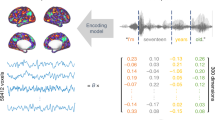Abstract
Semantic memory is the cognitive system devoted to storage and retrieval of conceptual knowledge. Empirical data indicate that semantic memory is organized in a network structure. Everyday experience shows that word search and retrieval processes provide fluent and coherent speech, i.e. are efficient. This implies either that semantic memory encodes, besides thousands of words, different kind of links for different relationships (introducing greater complexity and storage costs), or that the structure evolves facilitating the differentiation between long-lasting semantic relations from incidental, phenomenological ones. Assuming the latter possibility, we explore a mechanism to disentangle the underlying semantic backbone which comprises conceptual structure (extraction of categorical relations between pairs of words), from the rest of information present in the structure. To this end, we first present and characterize an empirical data set modeled as a network, then we simulate a stochastic cognitive navigation on this topology. We schematize this latter process as uncorrelated random walks from node to node, which converge to a feature vectors network. By doing so we both introduce a novel mechanism for information retrieval, and point at the problem of category formation in close connection to linguistic and non-linguistic experience.
Similar content being viewed by others
References
P. Roget, Roget's Thesaurus of English Words and Phrases (TY Crowell co, 1911)
C. Fellbaum et al., WordNet: An electronic lexical database (MIT press Cambridge, MA, 1998)
K. Klemm, V. Eguíluz, M. San Miguel, Phys. Rev. Lett. 95, 128701 (2005)
A. Baddeley, Human memory: Theory and practice (Allyn & Bacon, Boston, MA, 1990)
A. Budanitsky, G. Hirst, Computational Linguistics 32, 13 (2006)
D.L. Nelson, C.L. McEvoy, T.A. Schreiber, http://www.usf.edu/FreeAssociation/ (1998)
K. McRae, G. Cree, M. Seidenberg, C. McNorgan, Behavior Research Methods 37, 547 (2005)
R. Albert, A. Barabasi, Rev. Mod. Phys. 74, 47 (2002)
S. Boccaletti, V. Latora, Y. Moreno, M. Chavez, D. Hwang, Phys. Rep. 424, 175 (2006)
M.E.J. Newman, SIAM Rev. 45, 167 (2003)
M.E.J. Newman, Phys. Rev. E 69 (2004)
J. Duch, A. Arenas, Phys. Rev. E 72 (2005)
L. Danon, J. Duch, A. Arenas, A. Díaz-Guilera, Journal of Statistical Mechanics: Theory and Experiment, P09008 (2005)
M. Sales-Pardo, R. Guimerà, A. Moreira, L. Amaral, PNAS USA 104, 15224 (2007)
E. Rosch, B. Lloyd, Cognition and categorization (Erlbaum Hillsdale, NJ, 1978)
J. Goñi, I. Martincorena, B. Corominas-Murtra, G. Arrondo, S. Ardanza-Trevijano, P. Villoslada, International Journal of Bifurcation and Chaos (2009)
L. Costa, G. Travieso, Phys. Rev. E 75, 16102 (2007)
J. Noh, H. Rieger, Phys. Rev. Lett. 92, 118701 (2004)
S. Yang, Phys. Rev. E 71, 16107 (2005)
L. Lovàsz, Bolyai Soc. Math. Stud. 2, 353 (1996)
D.L. Nelson, N. Zhang, Psychon. Bull. Rev. 7, 604 (2000)
P. Jaccard, Bulletin de la Société Vaudoise des Sciences Naturelles 37, 241 (1901)
E. Ravasz, A. Somera, D. Mongru, Z. Oltvai, A. Barabási, Hierarchical organization of modularity in metabolic networks (2002)
G. Salton, M. McGill, Introduction to modern information retrieval (McGraw-Hill, Auckland, 1983)
G. Salton, Automatic text processing: the Transformation, Analysis and Retrieval of Information by Computer (Addison-Wesley, Reading, MA, 1989)
E. Leicht, P. Holme, M. Newman, Phys. Rev. E 73 (2006)
V. Blondel, A. Gajardo, M. Heymans, P. Senellart, P. Van Dooren, SIAM Rev. 46, 647 (2004)
G. Jeh, J. Widom, SimRank: a measure of structural-context similarity, in Proceedings of the 8th ACM SIGKDD international conference on Knowledge discovery and data mining (2002)
S. Deerwester, S. Dumais, G. Furnas, T. Landauer, R. Harshman, J. Am. Soc. Information Science 41, 391 (1990)
T. Landauer, S. Dumais, Psychol. Rev. 104, 211 (1997)
T. Landauer, P.W. Foltz, D. Laham, Discourse Processes 25, 259 (1998)
V.I. Levenshtein, Soviet Physics Doklad. 10, 707 (1966)
F. Damerau, Communications of the ACM (1964)
P. Pons, M. Latapy, Lect. Notes Comput. Sci. 3733, 284 (2005)
M. Rosvall, C. Bergstrom, Proc. Nat. Acad. Sci. 105, 1118 (2008)
Author information
Authors and Affiliations
Corresponding author
Rights and permissions
About this article
Cite this article
Borge-Holthoefer, J., Arenas, A. Categorizing words through semantic memory navigation. Eur. Phys. J. B 74, 265–270 (2010). https://doi.org/10.1140/epjb/e2010-00058-9
Received:
Revised:
Published:
Issue Date:
DOI: https://doi.org/10.1140/epjb/e2010-00058-9




